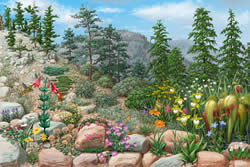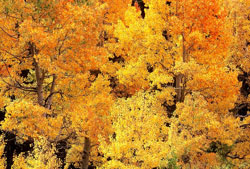USDA Forest Service Celebrating Wildflowers
|
|
|
Unique Plant Communities on Our National Forests and GrasslandsWithin the pages of Celebrating Wildflowers we describe the wonderful world of wildflowers. From Plant of the Week, Pollinator of the Month, and the Beauty of It All, we have revealed many interesting facts and unusual stories about wildflowers. Unique Plant Communities on Our National Forests and Grasslands takes a broader look at the communities where wildflowers live. We will examine unique, sometimes unusual, and always fascinating plant communities. From the White Mountain National Forest in New Hampshire, to the Coronado National Forest in southern Arizona, and all areas in between, we will explore tropical rainforest, alpine communities, fens, pitcher plant bogs, serpentine communities, vernal pools, and many others. As Lewis and Clark did before us, we too will start out on our Voyage of Discovery. Join us and learn of the mysteries and wonders of the many unique plant communities on our national forests and grasslands. Stark Beauty: Klamath-Siskiyou SerpentinesFormed deep within the earth's mantle, serpentine rocks found their way to the surface over millennia. On serpentine soils, a unique flora evolved especially adapted to survive severe hardships of drought, heavy metals, and nutrient stress. The Klamath-Siskiyou Mountains of northwest California and southwest Oregon are the largest serpentine area in North America. In this feature, Celebrating Wildflowers explores the unique plant communities on the National Forests of the Klamath-Siskiyou Mountains. Fading Gold: The Decline of Aspen in the WestFading Gold explores the aspen community in the western United States. It describes how aspen grows, the symptoms and possible causes for the decline of aspen from the Rocky Mountains to the Sierra Nevada Mountains, and the challenges for maintaining this species in the western landscape. Featured are the aspen's beautiful fall colors, wildflowers that live in the aspen community, and the traces left in the aspen groves by visitors from the past. |
|
| NOTE: PDF format links require the Adobe Acrobat Reader to view. | |
| top | Disclaimers | FOIA | Privacy Policy | Quality of Information | Photo Credits & Use |
Location: http://www.fs.fed.us/wildflowers/communities/index.shtml
Last modified: Wednesday, 03-Dec-2008 13:58:09 EST

